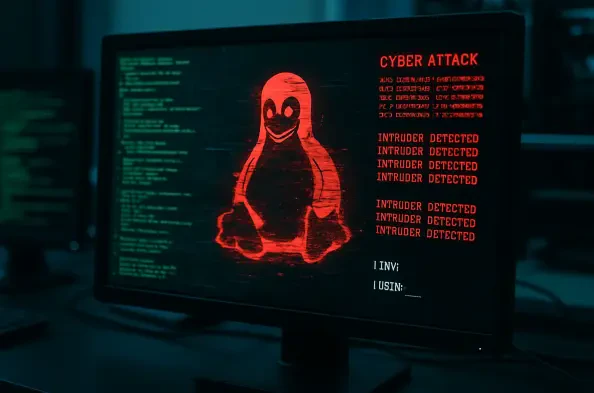In a chilling reminder of the ever-evolving landscape of cybersecurity threats, a highly coordinated campaign has emerged, targeting cloud-based Linux systems with unprecedented precision through a critical flaw in Apache ActiveMQ. This attack exploits a severe remote code execution vulnerability known as CVE-2023-46604, which carries a staggering CVSS 3.1 score of 9.8, signaling its extreme severity. With a 94.44% likelihood of exploitation based on its EPSS score, this flaw has become a gateway for malicious actors to infiltrate networked environments. Apache ActiveMQ, a popular open-source message broker written in Java, is integral to many enterprise systems, making this vulnerability a prime target for attackers aiming to compromise sensitive infrastructure. The sophistication of this campaign, marked by advanced tactics and stealth, raises urgent questions about the readiness of organizations to defend against such threats.
Unpacking the Threat Landscape
Exposing the Critical Vulnerability
The foundation of this cyberattack lies in the exploitation of CVE-2023-46604, a flaw that allows attackers to execute arbitrary code on affected systems with devastating ease. This vulnerability, embedded in Apache ActiveMQ, has turned a widely trusted messaging tool into a potential backdoor for malicious entities. Once exploited, attackers gain unfettered access to cloud-based Linux environments, often critical to business operations. The severity of this issue cannot be overstated, as it provides a direct path to system compromise without requiring complex entry tactics. Beyond initial access, the attackers demonstrate a chilling level of foresight by patching the vulnerability post-exploitation. By downloading legitimate Apache ActiveMQ JAR files from trusted repositories and replacing vulnerable components, they block rival threat actors from using the same entry point while reducing the likelihood of detection by standard vulnerability scanners. This calculated move underscores a troubling trend toward exclusivity in cyberattacks.
Tactics of Stealth and Control
Beyond exploiting the vulnerability, the attackers employ a multi-layered approach to maintain dominance over compromised systems. A striking aspect of this campaign is the use of advanced operational security measures that mirror the sophistication of nation-state actors. After securing access, adversaries deploy a novel malware strain dubbed DripDropper, an encrypted PyInstaller ELF file that requires a password to execute, effectively thwarting automated sandbox analysis. This malware leverages adversary-controlled Dropbox accounts for command and control communication, blending malicious traffic with legitimate network activity through hardcoded bearer tokens. Additionally, persistence is established by altering cron job files and creating payloads with randomized names to modify SSH configurations. These changes enable root login access and alter default login shells, ensuring sustained remote access. Such meticulous tactics reveal a deep understanding of system architecture and a commitment to long-term control.
Implications and Defense Strategies
Malware Evolution and Broader Risks
The deployment of DripDropper is just one facet of a broader pattern of evolving threats tied to CVE-2023-46604, which has previously been exploited to deliver notorious malware families like TellYouThePass, Ransomhub, HelloKitty ransomware, and Kinsing cryptocurrency miners. Observations across numerous cloud-based Linux endpoints highlight the pervasive targeting of these environments, often critical to organizational infrastructure. The use of legitimate tools such as Sliver implants and Cloudflare Tunnels further complicates detection, as attackers mask their activities within trusted services. This blending of innovative malware with legitimate platforms exemplifies a shift toward stealth, where adversaries prioritize exclusivity and persistence over immediate destruction. The implications are profound, as high-privilege systems become long-term assets for attackers, potentially leading to data breaches, financial loss, or operational disruption on a massive scale.
Building Robust Defenses
In response to these sophisticated attacks, organizations must move beyond traditional vulnerability management to adopt a layered security posture. Comprehensive strategies should include robust logging to track anomalous behavior, configuration monitoring to detect unauthorized changes, and strict adherence to the principle of least privilege across Linux and cloud environments. Tools like ANY.RUN sandbox can play a pivotal role in safely detonating suspicious files, enhancing threat detection, and accelerating incident response. Moreover, regular patching and system hardening are non-negotiable to prevent initial exploitation. The focus must shift toward proactive measures, anticipating attacker tactics like post-exploitation patching or the abuse of legitimate services. By integrating these practices, enterprises can better safeguard critical systems against multi-faceted threats. Reflecting on this campaign, it became evident that attackers had leveraged both technical prowess and strategic patience to secure their foothold, challenging defenders to adapt swiftly.
Reflecting on a Persistent Challenge
Lessons from a Stealthy Adversary
Looking back, the intricate nature of this cyberattack campaign revealed how adversaries had mastered the art of evasion and persistence. The exploitation of CVE-2023-46604 in Apache ActiveMQ served as a stark warning about the vulnerabilities lurking in widely used software. Attackers had not only infiltrated systems but also fortified their position by patching flaws after entry, a tactic that had effectively locked out competitors and hidden their presence from detection tools. The introduction of DripDropper malware, with its encrypted execution and covert communication channels, had underscored a new era of malware designed to outsmart conventional defenses. This campaign had exposed the fragility of cloud-based Linux systems when faced with determined, resourceful foes. The use of legitimate tools for malicious ends had further blurred the lines between benign and harmful activity, complicating the task of identifying threats in real time.
Charting the Path Forward
As this threat had unfolded, it became clear that reactive measures alone were insufficient against such advanced adversaries. Organizations needed to prioritize continuous monitoring and invest in advanced threat detection capabilities to stay ahead of evolving tactics. Strengthening endpoint security in Linux environments had proven essential, as had the enforcement of stringent access controls to minimize the impact of a breach. Collaboration across industries to share threat intelligence could also amplify collective defenses, ensuring that lessons from past attacks informed future strategies. The adoption of sandboxing tools and behavior-based analysis had offered a way to dissect suspicious activities without risking broader system exposure. Ultimately, the battle against these sophisticated campaigns demanded a mindset of resilience and adaptability, recognizing that each incident provided critical insights for fortifying defenses against the next wave of cyber threats.






